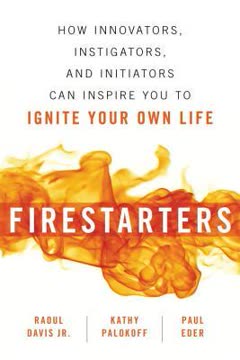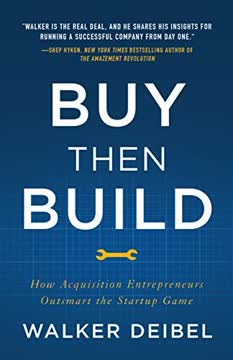Key Takeaways
1. Zone Management: A New Playbook for Navigating Disruption
To compete effectively, management must free itself from this bind. It needs to reconfigure its enterprise to fight independently on multiple fronts, acting in parallel but not in lockstep.
Four distinct zones. Zone management divides enterprise activity into four zones: Performance, Productivity, Incubation, and Transformation. Each zone operates with its own unique goals, metrics, and management styles, allowing companies to simultaneously maintain existing businesses while pursuing new opportunities.
Balancing act. This framework addresses two critical challenges:
- Onboarding new lines of business while maintaining existing ones (playing zone offense)
- Defending against disruptive attacks on mature core businesses (playing zone defense)
By separating these activities into distinct zones, companies can better allocate resources, set appropriate goals, and manage the inherent tensions between sustaining and disruptive innovations.
2. The Performance Zone: Delivering Results in Established Markets
The performance zone generates virtually all the revenue and more than 100 percent of the profits of the enterprise.
Performance matrix. The core of the Performance Zone is the performance matrix, organizing established lines of business into rows (products/services) and columns (sales channels). Each intersection represents a cell with specific revenue and profitability targets.
Key elements of the Performance Zone:
- Material revenue (>10% of total enterprise revenue)
- Cyclical growth (typically 3-4% in mature categories)
- Focus on execution and operational excellence
- Quarterly business reviews and weekly commitments
- Joint accountability between row and column owners
The Performance Zone requires disciplined management and a relentless focus on meeting financial targets while maintaining customer satisfaction and market share.
3. The Productivity Zone: Enabling Efficiency and Effectiveness
To win the peace at the bottom line.
Shared services. The Productivity Zone encompasses all enterprise resources without direct revenue accountability, organized as shared services. These include core corporate functions, market-facing operations, and supply chain management.
Three key value propositions:
- Regulatory compliance
- Improved efficiency ("doing things right")
- Improved effectiveness ("doing the right things")
Systems vs. programs. A critical distinction in the Productivity Zone is between systems (standardized, persistent infrastructure) and programs (targeted, time-bound initiatives). Systems focus on efficiency, while programs prioritize effectiveness. Balancing these two elements is crucial for optimizing overall productivity and supporting the Performance Zone's goals.
4. The Incubation Zone: Nurturing Future Growth Opportunities
The incubation zone is home to Horizon 3 investments, the ones that are not expected to reach material size for several years, sometimes considerably longer.
Venture-like approach. The Incubation Zone operates like an internal venture capital fund, nurturing potential disruptive innovations that could become future material lines of business.
Key criteria for Incubation Zone investments:
- 10X improvement in a critical performance metric
- Potential to scale to 10% of total enterprise revenue
- Represents a net new line of business, not an adjacency
Governance model. Incubation efforts are managed as Independent Operating Units (IOUs) with dedicated resources and milestone-based funding. A venture board oversees the portfolio, making decisions on funding, continuation, and potential exits for each IOU.
5. The Transformation Zone: Scaling Disruptive Innovations
The transformation zone is the place in an established enterprise where a disruptive business model goes to be scaled to material size.
CEO's domain. The Transformation Zone is where the CEO takes direct control, leading the effort to scale a disruptive innovation to material size (typically 10% or more of total enterprise revenue).
Key challenges:
- Reallocating resources from established businesses
- Managing the "J-curve" of initial underperformance
- Aligning the entire organization behind the transformation
- Communicating the narrative to investors and stakeholders
Success in the Transformation Zone requires unwavering commitment, clear prioritization, and the ability to navigate short-term pain for long-term gain.
6. Playing Zone Offense: Adding Net New Lines of Business
When an enterprise commits to creating a net new line of business and scaling it to material size, it puts itself under enormous resource pressure, and virtually all of its relief must come from the productivity zone.
Resource reallocation. Playing zone offense involves adding a new row to the performance matrix, which requires significant resource reallocation across all zones:
- Performance Zone: Dedicating up to 10% of go-to-market capacity
- Productivity Zone: Reengineering processes to free up resources
- Incubation Zone: Forcing exits or reprioritization of other initiatives
- Transformation Zone: Focusing all efforts on scaling the new business
Executive alignment. Success requires aligning executive compensation and priorities around the transformation, with up to 50% of annual bonuses tied to its success.
7. Playing Zone Defense: Modernizing Existing Business Models
A company earns its keep by helping its customers release trapped value in their operations. But what if the value is being trapped by your own company's offers?
Three-step strategy:
- Neutralize: Quickly co-opt key features of the disruptive innovation
- Optimize: Reduce costs and streamline operations to maintain margins
- Differentiate: Reinvent the business model for long-term sustainability
Balancing act. Playing zone defense requires maintaining existing customer relationships and ecosystem partnerships while rapidly evolving the business model. This often involves painful trade-offs and difficult decisions about resource allocation.
8. Implementing Zone Management: Annual Planning and Execution
When it comes to installing anything new, as golf instructors tell their pupils everywhere, it is all in the setup.
Annual planning process. Implementing zone management requires a structured approach during the annual planning process:
- Zone your organizations: Assign each org to a single zone
- Lock in the performance matrix: Formalize row and column ownership
- Activate the productivity zone: Zero-based budgeting for cost centers
- Fence off the incubation zone: Set fund size and establish governance
- Determine transformation zone status: Inactive, proactive, or reactive
Execution focus. Throughout the year, maintain discipline in executing zone-specific playbooks while ensuring coordination across zones. Regular reviews and adjustments are crucial for success.
9. Case Study: Salesforce's Successful Zone Offense Strategy
Marc drives transformations. He is simply world-class at doing so.
Rapid transformation. Salesforce successfully implemented zone management principles to drive growth and navigate disruption:
Key changes:
- Performance Zone: Strengthened matrix structure with empowered GMs
- Productivity Zone: Balanced systems and programs for scalable growth
- Incubation Zone: Rationalized portfolio and clarified exit paths
- Transformation Zone: Scaled Marketing Cloud to material size
Cultural enablers. Salesforce's success was underpinned by:
- V2MOM management system for alignment and prioritization
- 1-1-1 integrated philanthropy model fostering a generous culture
- Collaborative yet competitive culture driven by strong leadership
10. Case Study: Microsoft's Zone Defense in a Changing Landscape
As challenging as it is to play zone offense, it is even more challenging to play zone defense.
New leadership approach. Under CEO Satya Nadella and EVP Qi Lu, Microsoft adopted a more humble and collaborative leadership style to navigate disruption.
Key challenges:
- Performance Zone: Adapting to cloud-based and mobile-first world
- Productivity Zone: Streamlining operations and embracing open source
- Incubation Zone: Fostering innovation in AI, mixed reality, and quantum computing
- Transformation Zone: Transitioning core businesses to cloud-based models
Microsoft's ongoing transformation demonstrates the complexity of playing zone defense while simultaneously repositioning for future growth opportunities.
Last updated:
FAQ
What's "Zone to Win: Organizing to Compete in an Age of Disruption" about?
- Focus on Disruption: The book addresses how established enterprises can organize themselves to compete effectively in an age of disruptive innovation.
- Zone Management Model: It introduces a framework called zone management, which divides enterprise activities into four distinct zones to manage disruptive and sustaining innovations.
- Strategic Prioritization: The book emphasizes the importance of prioritizing initiatives to either catch the next wave of innovation or defend against disruptive attacks.
- Case Studies: It includes real-world examples from companies like Salesforce and Microsoft to illustrate the application of the zone management model.
Why should I read "Zone to Win"?
- Understanding Disruption: It provides insights into how disruptive technologies impact business strategy and company valuations.
- Practical Framework: The book offers a practical playbook for organizing and managing enterprises to compete effectively in disrupted markets.
- Real-World Examples: It includes case studies from leading companies, offering valuable lessons on implementing the zone management model.
- Strategic Insights: Readers gain strategic insights into resource allocation, prioritization, and execution in the face of disruption.
What are the key takeaways of "Zone to Win"?
- Four Zones Framework: The book introduces the performance, productivity, incubation, and transformation zones, each with distinct roles and management practices.
- Prioritization is Crucial: Successful companies must prioritize either playing offense to catch new waves or playing defense to fend off disruptions.
- CEO's Role in Transformation: The CEO must lead transformational initiatives, as they require bold leadership and significant resource reallocation.
- Alignment and Execution: Effective execution requires alignment across all zones, with clear metrics and accountability.
What is the "zone management" model in "Zone to Win"?
- Four Distinct Zones: The model divides enterprise activities into the performance, productivity, incubation, and transformation zones, each with specific goals and methods.
- Separate Management: Each zone operates independently, with its own playbook, to avoid conflicts and ensure focused execution.
- Interoperability: While zones operate independently, they must interoperate fluidly to achieve overall enterprise success.
- Strategic Resource Allocation: The model emphasizes strategic resource allocation across zones to manage disruptive and sustaining innovations effectively.
How does "Zone to Win" define the four zones?
- Performance Zone: Focuses on revenue performance from established businesses, making the number is crucial here.
- Productivity Zone: Home to shared services, it aims to improve efficiency and effectiveness through systems and programs.
- Incubation Zone: Hosts emerging businesses with disruptive potential, focusing on developing them to a scale where they can transition to the transformation zone.
- Transformation Zone: Where disruptive business models are scaled to material size, requiring significant resource reallocation and CEO leadership.
What role does the CEO play in "Zone to Win"?
- Leadership in Transformation: The CEO must lead transformational initiatives, prioritizing them over making the current year's numbers.
- Resource Reallocation: The CEO is responsible for reallocating resources to support the transformation zone, even at the expense of established lines of business.
- Alignment and Communication: The CEO must ensure alignment across all zones and communicate the transformation narrative to investors and stakeholders.
- Bold Decision-Making: Transformations require bold decisions and prioritization, which only the CEO can enforce effectively.
How does "Zone to Win" suggest companies handle disruptive innovation?
- Neutralize First: Companies should first neutralize the disruptor's attack by co-opting their innovations into existing offerings.
- Optimize Second: Optimize existing operations to free up resources for transformation and fend off the disruptor.
- Differentiate Third: Finally, differentiate by evolving the business model to align with future customer needs and market realities.
- Focus on Core Strengths: Companies should leverage their core strengths and assets, like customer base and ecosystem, to defend against disruption.
What are the challenges of implementing the "zone management" model?
- Resource Allocation Conflicts: Balancing resource allocation between zones can be challenging, especially when prioritizing transformation over performance.
- Cultural Resistance: Established enterprises may face cultural resistance to change, requiring strong leadership to overcome.
- Execution Discipline: Maintaining execution discipline across all zones is crucial, with clear metrics and accountability.
- Managing Transitions: Successfully transitioning businesses from the incubation to the transformation zone requires careful planning and execution.
How does "Zone to Win" address the incubation zone?
- Focus on Disruptive Potential: The incubation zone hosts businesses with disruptive potential, aiming to develop them to a scale where they can transition to the transformation zone.
- Independent Operating Units: Each business operates as an independent unit with its own general manager and dedicated resources.
- Venture Funding Discipline: Businesses in the incubation zone follow a venture funding discipline, with milestones determining continued investment.
- Exit Strategies: The book outlines various exit strategies for businesses that do not transition to the transformation zone, such as assimilation or spin-out.
What are the best quotes from "Zone to Win" and what do they mean?
- "Catching the next wave is all that really matters." This emphasizes the importance of prioritizing disruptive innovation to drive growth and market valuation.
- "Transformation is the signature accomplishment of a CEO’s tenure." Highlights the CEO's critical role in leading transformational initiatives to secure the company's future.
- "You cannot disrupt your way out of a disrupted category." Advises against trying to disrupt one's own business model, instead focusing on neutralizing and optimizing.
- "The real truth is most companies take run after run at this hurdle, but each time, at the critical juncture, that moment when you have to either go big or go home, they shy away." Reflects on the common failure of companies to commit fully to transformational initiatives.
How do Salesforce and Microsoft exemplify the "zone management" model in "Zone to Win"?
- Salesforce's Offense: Salesforce exemplifies zone offense by successfully scaling new lines of business, like the Marketing Cloud, through effective use of the transformation zone.
- Microsoft's Defense: Microsoft demonstrates zone defense by neutralizing threats to its core businesses, like Office and Windows, through strategic initiatives in the transformation zone.
- Leadership and Alignment: Both companies show the importance of leadership and alignment across zones to execute transformational initiatives successfully.
- Adaptation and Innovation: Salesforce and Microsoft illustrate how established enterprises can adapt and innovate to compete effectively in disrupted markets.
What are the common mistakes companies make according to "Zone to Win"?
- Overrotating to Performance: Companies often prioritize making the current year's numbers over transformational initiatives, hindering long-term success.
- Competing Transformations: Attempting multiple transformations simultaneously dilutes focus and resources, leading to failure.
- Delegating Transformation Leadership: CEOs must lead transformational initiatives, as delegating this responsibility can result in misalignment and lack of prioritization.
- Incomplete Alignment: Lack of alignment among senior executives can derail transformational efforts, emphasizing the need for unified commitment.
Review Summary
Zone to Win offers a framework for established companies facing disruption, dividing business into four zones: performance, productivity, incubation, and transformation. Moore emphasizes the importance of managing these zones separately, with distinct goals and metrics. The book provides strategies for playing offense and defense in disrupted markets, highlighting the need for focused leadership and resource allocation. While some readers found the concepts valuable, others felt the writing could be dry and repetitive. Overall, it's seen as a useful guide for executives in large corporations dealing with technological change.
Similar Books










Download PDF
Download EPUB
.epub digital book format is ideal for reading ebooks on phones, tablets, and e-readers.








